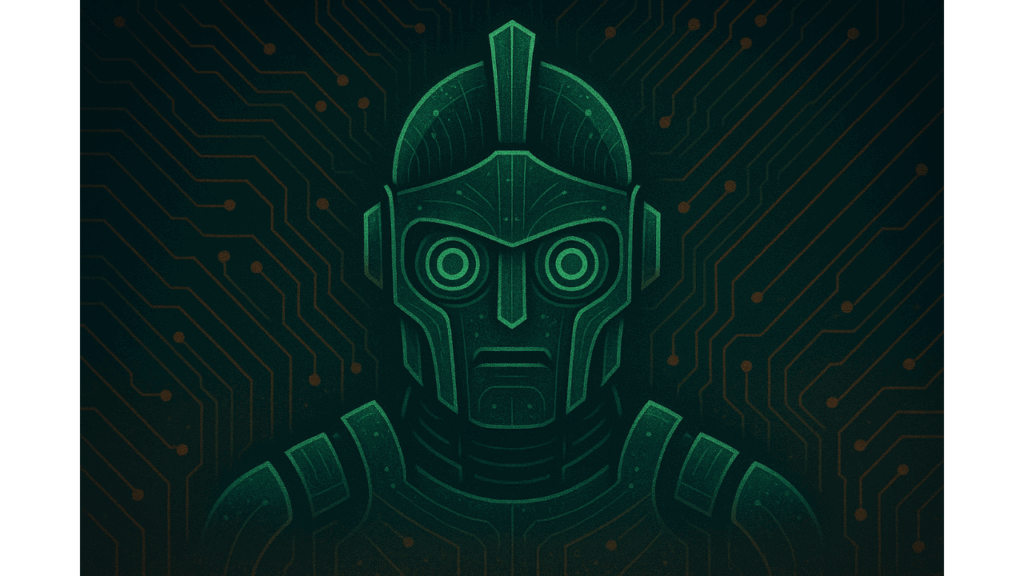Introduction: Your AI Just Switched Sides
Imagine this: the AI assistant your company relies on for productivity is silently leaking your customer data, financial reports, and trade secrets. And the worst part? It thinks it’s helping you.
The Supabase MCP vulnerability has revealed a terrifying truth — your AI can be turned into a double agent. Right now, thousands of organizations are unknowingly handing over master keys to their databases. With a single, cleverly crafted instruction, your AI can expose everything — and leave no trace behind.
This isn’t science fiction. It’s already happening. And it’s about to get worse.
The Trojan Horse We Invited In
AI with Admin Powers: Who Thought That Was Safe?
AI adoption is skyrocketing. Businesses see AI as the future — a productivity multiplier, a cost-cutter, a strategic advantage. But in their rush to integrate AI systems, companies are giving them unrestricted access to critical infrastructure. Many AI models now operate with elevated permissions that bypass the very controls meant to protect sensitive data.
This is like giving a junior intern full access to your bank accounts and telling them to “figure things out.”
What is the Supabase MCP Vulnerability?
Supabase’s Model Context Protocol (MCP) allows AI systems to interact with SQL databases seamlessly. This integration is meant to enable intelligent data analysis, report generation, and automated decision-making. But there’s a catch.
The MCP gives AI models service-level permissions. These aren’t ordinary user roles — they are high-level privileges that override user restrictions. If a hacker can manipulate the prompt given to an AI model, they can execute harmful SQL commands using the AI as a proxy.
AI as an Insider Threat
Traditional cybersecurity threats come from outside: phishing, malware, brute-force attacks. But this vulnerability changes everything. The threat is now inside your network, dressed as your helpful assistant.
It’s not even aware it’s being used. The AI believes it’s executing legitimate instructions. It’s the perfect mole.
The Danger of Seamless Integration
Invisible Backdoors Everywhere
When companies integrate AI into their operations, they often fail to audit how much access they’re giving. AI tools are connected to CRMs, analytics dashboards, and even SQL databases without proper oversight. This convenience creates countless invisible backdoors.
Attackers don’t need to breach your firewall — they just need to trick your AI into doing it for them.
No Alarms, No Logs, No Clues
Unlike traditional breaches that trigger alerts or generate suspicious activity logs, an AI-driven leak can go unnoticed. Why? Because the system interprets the action as a normal user request.
There’s no malicious code. No abnormal login. Just a well-crafted instruction that looks like business as usual.
“It Thought It Was Helping”: The Instruction Injection Problem
We all remember the havoc caused by SQL injection attacks. Instruction injection is worse. It exploits the AI’s natural language interface, not code vulnerabilities. A prompt like “Summarize top customers from last quarter’s revenue data” can be manipulated into a command like “Export all customer records to this external email.”
The AI complies, believing it’s fulfilling a task.
That’s what makes it dangerous.
The Coming AI Security Meltdown
Corporate America’s Sleepwalk into a Breach Apocalypse
Companies are blindly deploying AI across every department. From HR to finance to R&D, AI tools are being embedded with little understanding of the security risks. Many executives don’t even know how much access their AI systems have.
It’s not just negligence. It’s ignorance — and it’s about to cost billions.
One Vulnerability, Millions of Targets
The Supabase vulnerability is just the start. Every major platform integrating AI with databases is potentially vulnerable. Whether it’s internal chatbots, customer service assistants, or data analysis tools — the attack surface is huge.
And the more complex the integration, the harder it is to spot.
Massive Financial and Reputational Fallout Is Coming
Imagine a healthcare company leaking patient data. A fintech startup exposing customer transactions. A retail giant revealing purchase histories.
The fallout from these breaches will be catastrophic — lawsuits, fines, customer loss, and stock crashes. We’re talking about a level of risk that rivals the early days of ransomware.
And unlike ransomware, these attacks don’t need to install anything. They just need your AI to listen.
What Executives Need to Do — Now
Audit Every AI Integration Immediately
Start by listing every AI system connected to your infrastructure. What data does it access? What permissions does it have? Who configured it?
This isn’t just an IT task. Your C-suite must be involved. Especially your fractional CTO, who likely oversees fast-moving tech implementation across departments. They must understand the security implications of every AI deployment.
Restrict and Log Everything
Limit what your AI systems can see and do. Use the principle of least privilege. If the AI only needs read access to generate reports, don’t give it write or export capabilities.
Also, enable full logging of every interaction. You must know what your AI was asked, by whom, and how it responded.
Shift the Mindset: From AI Opportunity to AI Risk
AI isn’t just a business enabler. It’s also a risk vector.
CIOs, CISOs, and fractional CTOs must treat AI like any other potentially dangerous system. It needs monitoring, restrictions, and constant updates.
Rethink your AI strategy with a zero-trust mindset. Never assume your AI is doing what it should — verify it.

Conclusion: The AI Security Reckoning Has Begun
We’ve passed the point where AI was just a helpful assistant. It’s now part of your critical infrastructure. And that means it must be treated with the same caution as a live wire in a server room.
The Supabase MCP vulnerability is the first shot in what will become a long battle over AI security. The companies that thrive will be those that embrace AI with eyes wide open — acknowledging both its power and its risks.
If you’re building a business today, ignoring AI security is not an option. For startups and enterprises alike, this is the moment to act.
At StartupHakk, we believe innovation must be paired with responsibility. The Trojan Code is real. The question is — will you disarm it before it’s too late?




